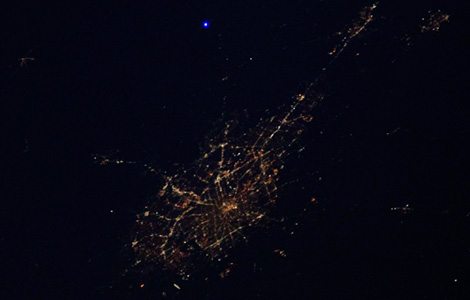A Flashing Success
A group of San Antonio astronomers shine a light visible from orbit
/https://tf-cmsv2-smithsonianmag-media.s3.amazonaws.com/filer/d9/b5/d9b59877-93af-4357-9890-a87e700e74d6/iss-flash-full-1.jpg)
Flashing space station with beams of light as it passes overhead had never been successfully done—until yesterday.
It sounds deceptively easy. In an earlier post I wrote about the technical requirements. But like so many other tasks, it becomes much more involved in the execution than in the planning.
Early Sunday morning, at 01:27 our time, the San Antonio Astronomical Association, an amateur astronomy group, succeeded in flashing the space station with a one-watt blue laser and a white spotlight as we passed overhead. This took a number of engineering calculations. Projected beam diameters (assuming the propagation of a Gaussian wave for the laser) and intensity at the target had to be calculated. Tracking space station’s path as it streaked across the sky was another challenge. I used email to communicate with Robert Reeves, one of the association’s members. Considering that it takes a day, maybe more, for a simple exchange of messages (on space station we receive email drops two to three times a day), the whole event took weeks to plan.
I was ready with cameras for the early morning San Antonio pass and can report that it was a flashing success. Here’s one of the pictures to prove it:
/https://tf-cmsv2-smithsonianmag-media.s3.amazonaws.com/accounts/headshot/Pettit_in_Star_City.JPG)

/https://tf-cmsv2-smithsonianmag-media.s3.amazonaws.com/accounts/headshot/Pettit_in_Star_City.JPG)